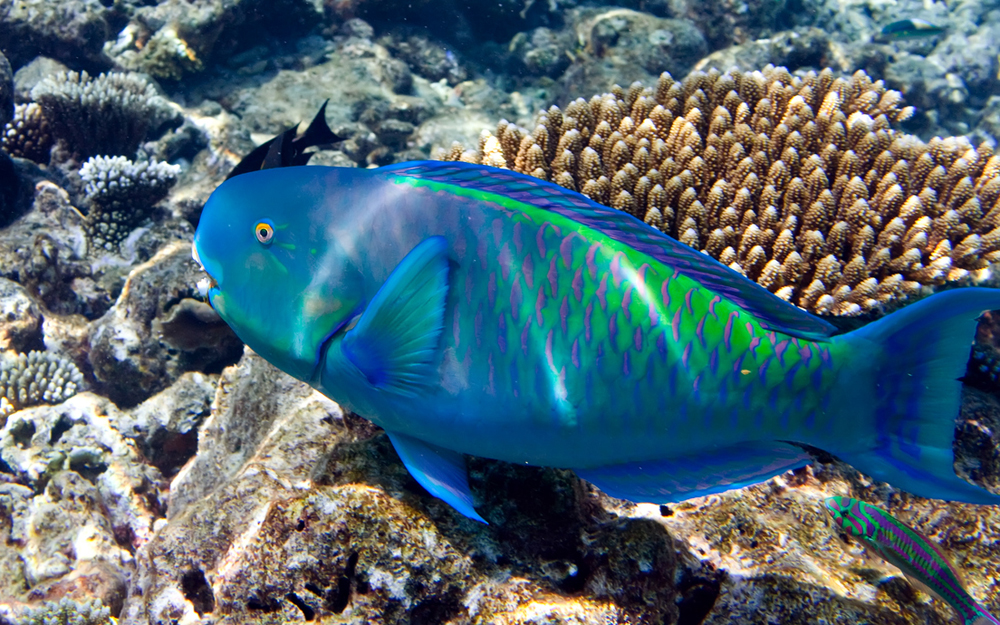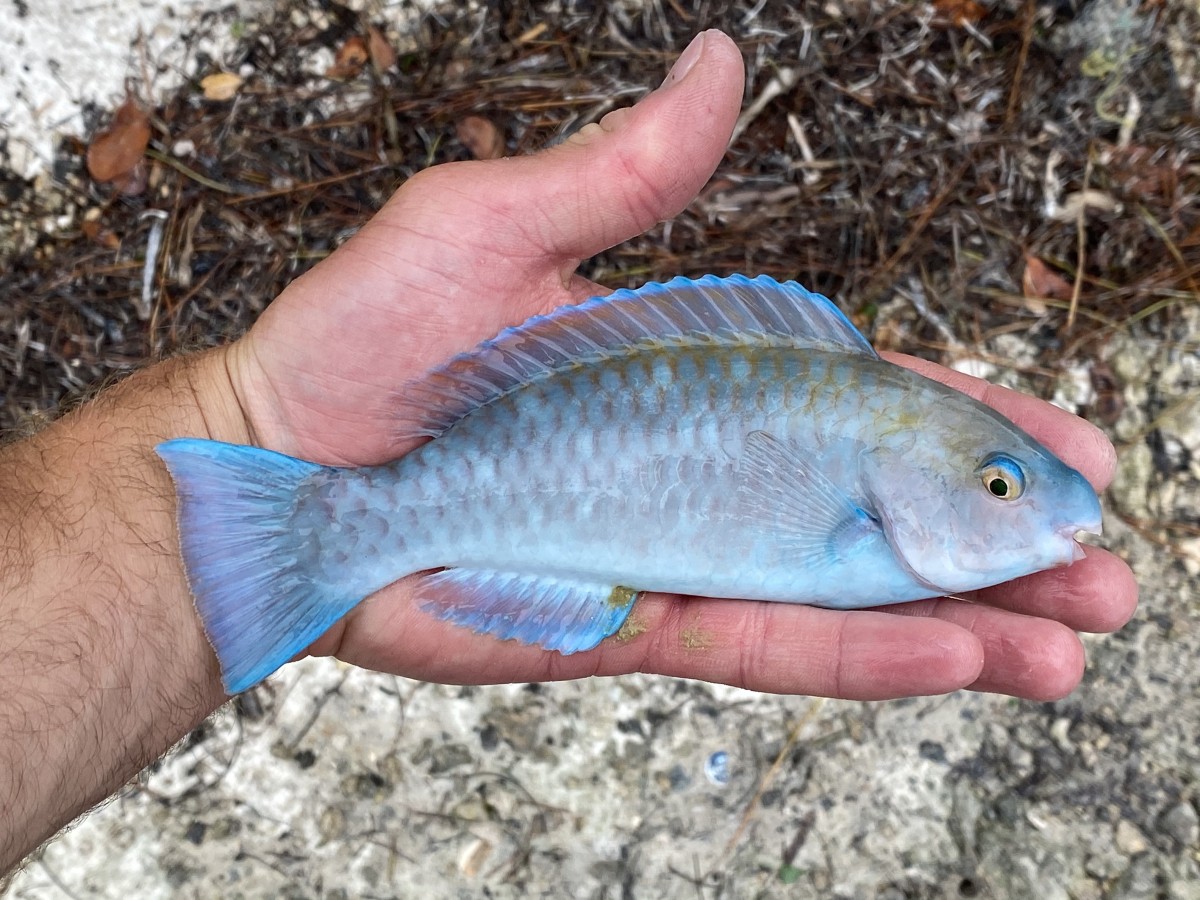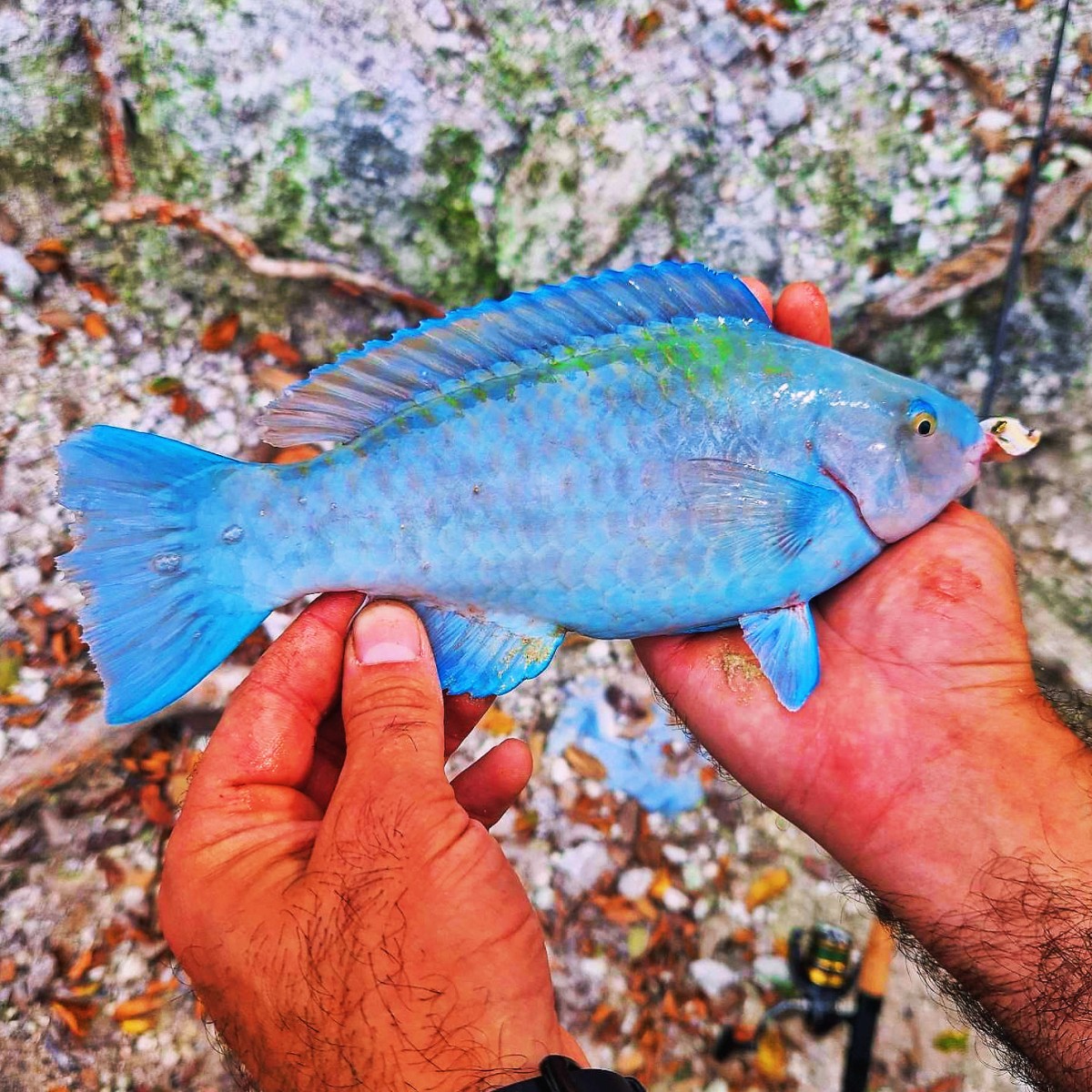Blue parrotfish
(Scarus coeruleus)

Classification
General data
The blue parrotfish (Scarus coeruleus) is a member of the parrotfish genus Scarus. It is found on coral reefs in shallow water in the tropical and subtropical parts of the western Atlantic Ocean and the Caribbean Sea.
Description
They are uniformly blue with a yellow spot on their heads that fades as they age. They average 30 to 75 centimetres (12 to 30 in) in length with a maximum length of 1.2 metres (3 ft 11 in). They develop a large beak like other parrotfish that is used for scraping algae and small organisms from rocks. They have pharyngeal teeth that grind ingested rocks into sand. No other species has this uniform blue color as adults. They weigh about 9.1 kilograms (20 lb).
Reproduction
In summer, blue parrotfish gather in spawning groups. Sexual interaction occurs and the females deposit their eggs into the water column after which they sink to the seabed. The eggs hatch after about twenty-five hours.Some special characteristics found in only female blue parrotfish are that there is an existence of an annually immature all-female group. The other is that females in the sexually mixed group spawn without any seasonality.
Distribution and habitat
Blue parrotfish are found on coral reefs at depths of 3–25 m (9.8–82.0 ft) in the western Atlantic from Maryland in the United States to Bermuda, the Bahamas, and south to Brazil. They are also found throughout the West Indies but are absent from the northern part of the Gulf of Mexico. Juveniles are found in beds of turtle grass (Thalassia testudinum).
The Scarus Coeruleus fish greatly depend on coral reef systems to provide them with various food sources; however, this ecosystem has become threatened, which has now put the blue parrotfish and many other species endangered of becoming extinct from lack of food availability.













